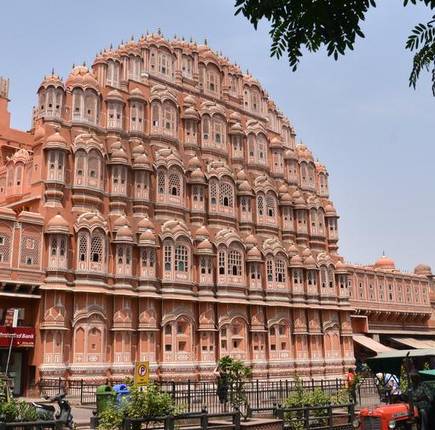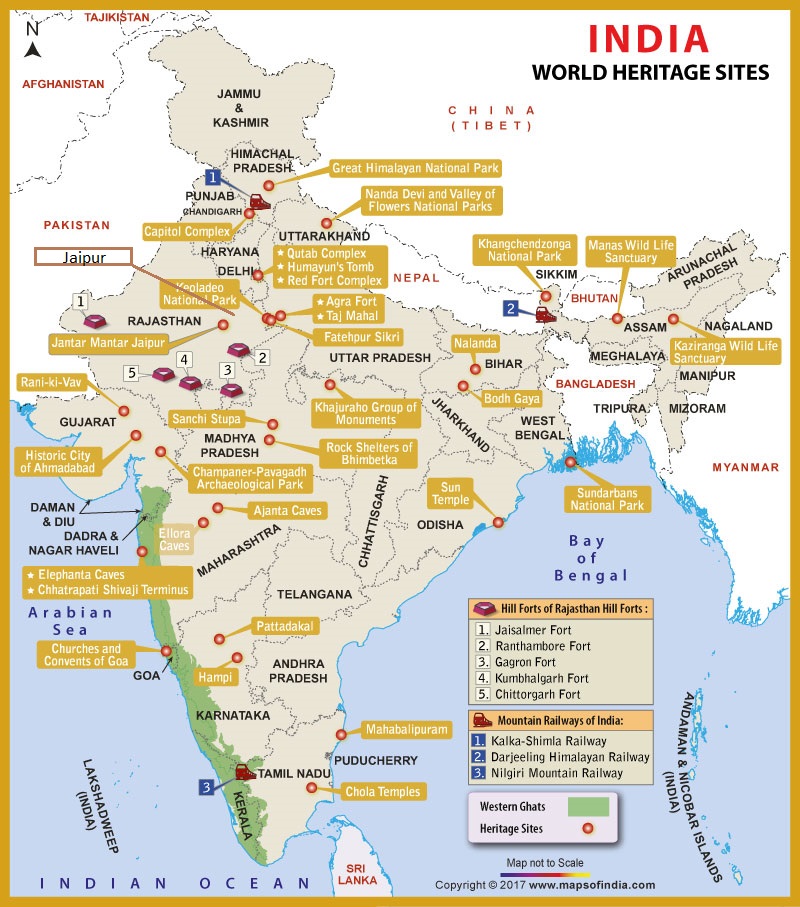JAIPUR: WORLD HERITAGE SITE
2020 APR 7
Mains >
Art and Culture > Architecture > Places in news

IN NEWS:
UNESCO handed over the world heritage certificate for ‘Jaipur’ to the Rajasthan government, which recognizes it as a World Heritage Site (cultural).

WHAT ARE WORLD HERITAGE SITES?
- UNESCO seeks to encourage the identification, protection and preservation of cultural and natural heritage around the world considered to be of ‘outstanding value to humanity’
- This is embodied in an international treaty called the Convention concerning the Protection of the World Cultural and Natural Heritage, adopted by UNESCO in 1972
- It encourages Parties of the Convention to nominate natural and cultural sites within their national territory into the World Heritage List and ensure their protection.
CLASSIFICATION:
There are three types of sites:
1. Cultural heritage sites include hundreds of historic buildings and town sites, important archaeological sites and works of monumental sculpture or painting.
2. Natural heritage sites, which are restricted to those natural areas with:
- outstanding examples of Earth’s record of life or its geologic processes
- excellent examples of ongoing ecological and biological evolutionary processes
- natural phenomena that are rare, unique, superlative or of outstanding beauty
- habitats for rare or endangered animals or plants or are sites of exceptional biodiversity.
3. Mixed heritage sites, which contain elements of both natural and cultural significance
BENEFITS:
- When a site is enlisted as World Heritage Site it results in creating awareness among governments and its citizens for its conservation and preservation.
- States Parties receive technical assistance and professional training which establishes management plans for the conservation and safe guarding World Heritage Sites.
- It encourages participation of the local population in the preservation of their cultural and natural heritage.
- It generates international attention and can boost tourism.
- A country may also receives financial assistance and expert advice from the World Heritage Committee to support activities for the preservation of its sites.
JAIPUR- THE PINK CITY:
- Jaipur was founded in 1727 by the then Kachwaha Rajput ruler of Amber, Sawai Jai Singh II.
- The city was established on the plains and built according to a grid plan and the buildings are constructed with the pink façade.
- Designed to be a commercial capital, the city has maintained its local commercial, artisanal and cooperative traditions to date.
- The city’s urban planning shows an exchange of ideas from ancient Hindu and modern Mughal as well as Western cultures.
- The grid plan is a model that prevails in the West while the organization of the different divisions refers to traditional Hindu concepts.
- Jaipur has been popularized with the name of Pink City because of the color of the stone exclusively used for the construction of structures (red or pink sandstone).
- Also, in 1876 the Prince Albert of Wales visited India on a tour. Since pink denotes the color of hospitality, Maharaja Ram Singh of Jaipur painted the whole city pink in color to welcome the guests.
- The tradition has been sincerely followed by the residents who are now by law compelled to maintain the pink color. The law was passed in 1877 still remains in effect today.

